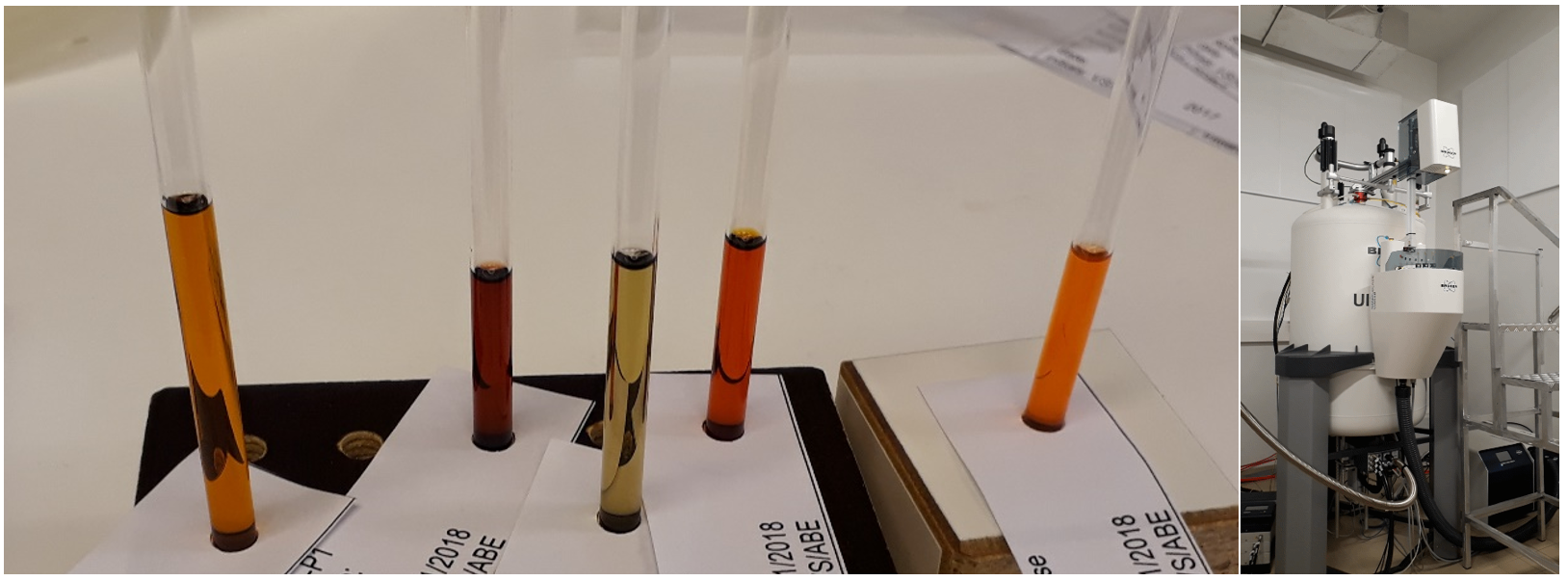We generate compounds in various projects, e.g. gene inactivation, cluster activation, in vitro enzyme reactions, synthetic biology and co-culturing. In order to understand what the compounds are, they have to be purified and examined by diverse methods. Before the structure of the metabolite can be elucidated, the compound needs to be produced in sufficient quantities and it has to be purified using chromatography.
The first step is growing Streptomyces either in several flasks or in a bioreactor. We have good facilities for large-scale production of secondary metabolites (several fermenters 2-15 litres and growing rooms for flask cultures). The downstream processing typically contains 2-3 chromatographic steps. It is good to use different methods, because with each step of the purification we are able to get rid of different impurities. Liquid-liquid extractions can be used to separate compounds with different solubility in two different immiscible solvents. Solvents used include chloroform, ethyl acetate, toluene and aqueous buffers. The next purification steps are made by open column chromatography. Silica-column is a normal phase purification method, where the separation of compounds is based on their hydrophobic/hydrophilic characteristics. Separation based on size using a Sephadex LH20 column is also a useful method to further purify the samples. The choice of methods and their specifics are determined on a case-by-case basis. The final polishing step is typically made by preparative HPLC with a reverse phase column attached to it.

Figure 1. Left: liquid-liquid extraction. Middle: Silica column application, run and fraction collection. Right: LH20 size exclusion.

Figure 2. Preparative scale HPLC and collected fractions.
Throughout the purification process, samples and collected fractions are analyzed with analytical HPLC coupled to either UV/Vis or mass spectrometers. Also TLC is used, which is run in similar conditions as the silica columns. We typically aim for >90% purity prior to structural analysis.

Figure 3. TLC running, TLC plate under UV light, analytical HPLC results on a computer screen.
To determine the structures, we use nuclear magnetic resonance (NMR) in combination with high resolution mass. NMR is the method of choice for small molecules – such as the compounds produced by Streptomyces. Typically the spectra are unique and well resolved. The disadvantage of NMR is that it is not very sensitive, but the instruments have been getting more sensitive with better resolution by larger liquid helium cooled superconductive magnets and cryo-probes. In addition to proton and carbon-13 measurements we use many two-dimensional measurements such as COSY that shows correlations between protons, HSQC that shows correlations between hydrogen and neighboring carbon and HMBC that shows longer range correlations between hydrogens and carbons.

Figure 4. Samples in NMR tubes. The 500 MHz instrument.
The final pure compound is analyzed by HPLC, high resolution MS and NMR.
Updated: 12 May 2018